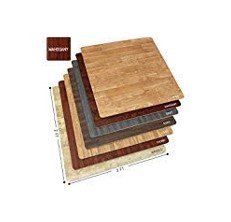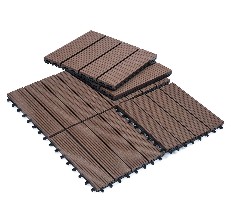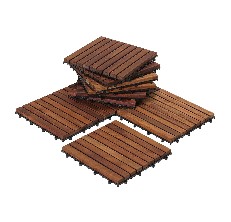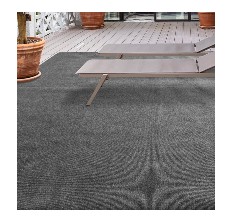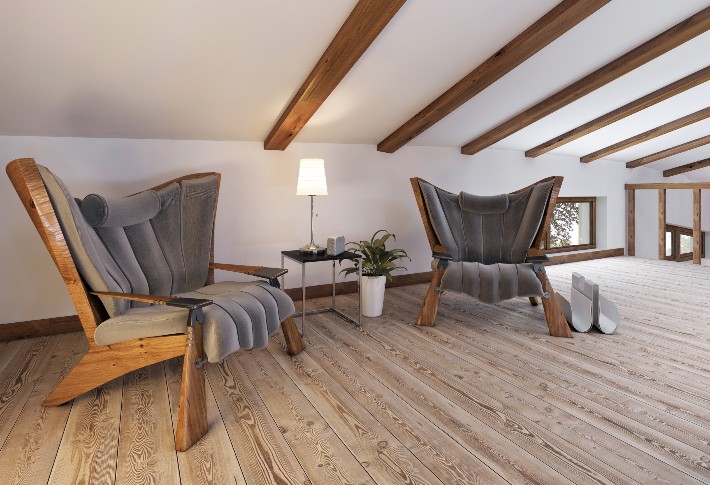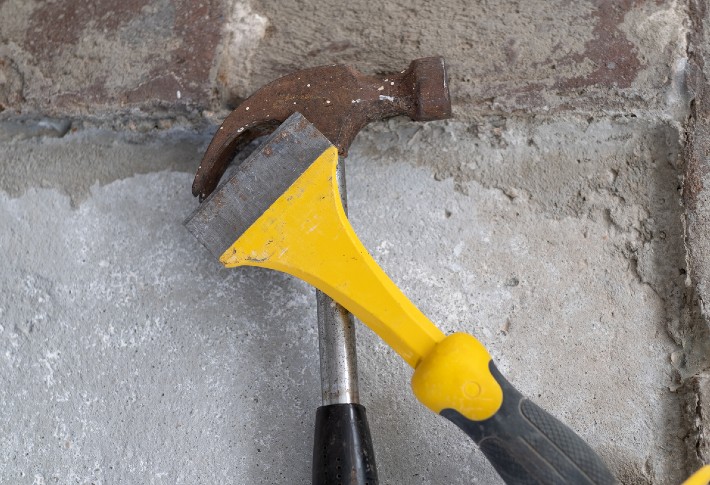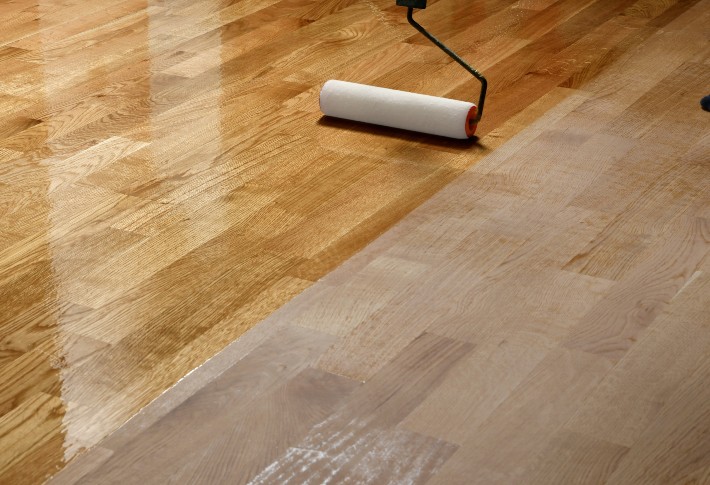Complete Your Basement With the Best Basement Flooring
Choosing the floor for your basement isn’t the same as selecting a floor for any other room. You need to consider certain things, such as a basement often being cooler in temperature or at a greater risk for flooding. Additionally, you may use your basement for specific activities that are rougher on the floor’s surface, such as hosting parties or using it as a home workout space.
The best basement flooring will make a small space look bigger and will survive temporary spills or flooding that may occur. The best basement flooring will also perfectly match your decor and have the durability required for your basement workshop.
There are many types of flooring options available right now. To help you choose the perfect product, we have listed a few designs and features you should consider later on in this article. But first, you can check out our top basement flooring in 2023. We have completed plenty of research on the greatest basement flooring so you don’t have to. We are sure you will find a product you love in our selection.
Buying Guide for the Best Basement Floorings
Things To Consider When Choosing Basement Flooring
There are many factors you should consider to ensure you buy basement flooring that is high quality and will work well in your space. Check out our key factors to keep in mind when shopping for new basement flooring.
Types of flooring
- Roll-out flooring
Roll-out flooring is an excellent option if you are not confident in your DIY skills. This type of flooring doesn’t require any adhesive to stay in place. Roll-out flooring is a type of vinyl flooring that is waterproof and also great if you have a low budget. It comes in many different designs, and often has the appearance of tiles or wood.
- Tiles with vapor barrier
Basements are notoriously damp and often have a build-up of excess moisture. Raised basement flooring tiles combat this issue. They usually have a built-in vapor barrier that prevents moisture from becoming trapped. This is because there is a gap between your flooring and the concrete.
This type of flooring allows good airflow, which allows excess moisture under the flooring to dissipate. This means you do not need to remove your flooring every time you experience a moisture buildup.
- Floating floors
Floating floors are placed above old flooring or rough concrete, so you don’t need to do as much work by pulling old flooring up. You simply need to place a rubber underlay before you install the floating floor. A floating floor is fast to install and can be cost-effective.
An issue that many people find with floating floors is that they become bouncy. Of course, this is not meant to happen, but it is a common problem.
- Ceramic tile
Ceramic tiles look beautiful in a basement. There are many colors and styles to choose from. They have the benefit of being waterproof. However, they will feel cold underfoot. You may want to combine ceramic tile flooring with some plush rugs.
- Epoxy-sealed concrete
Epoxy is a type of resin. If you want to epoxy your basement, you must ensure the concrete floor is cool and dry. Once the epoxy dries, it will be hard and thick, providing a durable and waterproof finish.
An epoxy is a good option if you are turning your basement into a workshop as it is super tough and won’t ruin the aesthetic if it receives a scratch or two.
- Engineered hardwood
Engineered hardwood is not regular hardwood. It is made by combining layers of hardwood and plywood. It can withstand the moisture and dampness that is typical in a basement. There are a lot of colors and styles available.
Design
If the aesthetics of your basement floor aren’t important, but waterproofing and durability are, you can save yourself a lot of money by opting for a plain design. However, if you know you want an aesthetically pleasing floor, you might be interested in checking out some of the following styles.
- Wood floor designs
There are several wood floor designs, including horizontal stripe patterns, mixed-width patterns, diagonal strip patterns, herringbone parquet, chevron parquet, 3D parquet, square basket patterns, and painted wood floors. There is surely a wood floor design to match any basement aesthetic.
- Horizontal strip patterns
Horizontal strip pattern flooring can make a basement look larger. This is the cheapest of the wood patterns to install. Floating floors often come in this style. Horizontal strip patterns are the standard pattern for most wood alternative flooring, offering a cheaper option than regular wood flooring.
- Mixed-width patterns
A mixed-width pattern looks similar to a horizontal strips pattern, except the boards are, as the name suggests, mixed widths. A mixed-width pattern wooden floor is easier to install with nails or glue than a click-together installation.
Alternatively, opt for full sets of stick-together mixed-width pattern wood flooring from an engineered wood flooring company to ensure you get a batch with matching click-lock mechanisms.
- Diagonal strip patterns
Diagonal strip patterns are angled at 45 degrees to the perimeter of the room. Installing a diagonal strip pattern is as easy as installing a horizontal strips pattern but will make your basement look a little more unique.
If your basement space is small, a diagonal strips pattern floor will make it seem bigger. This design is available in natural wood as well as laminate. It is an achievable look no matter your budget.
- Herringbone parquet
Herringbone parquet looks as if two pieces of wood are touching to make an arrowhead, creating a 90-degree angle. Herringbone parquet is challenging to install, so if you choose a natural wood herringbone parquet floor, you will need to get a professional to install it in your basement. Herringbone parquet looks exceptionally stylish when it is made from bamboo.
- Chevron parquet
Chevron parquet is similar to herringbone parquet, except the arrowhead shape creates a 45-degree angle instead of a 90-degree angle. This type of flooring is difficult to install, and it is not recommended to install it yourself. Chevron parquet is an expensive option because it requires someone with a lot of floor-laying experience to install it. It also requires great precision to cut the wood at 45-degree angles.
- 3D parquet
The illusion of 3D flooring is striking and will bring style and elegance to your basement. Unfortunately, this flooring option is expensive because it requires an expert installer, takes a lot of time, and uses a lot of wood. This wooden flooring style lets you incorporate different types of wood, allowing you to match it with a variety of furniture.
- Square basket patterns
Square basket patterns are also known as checkerboard patterns. The style consists of sets of small rectangular pieces of wood placed horizontally and alternating vertically. Unfortunately, click-together wooden square basket patterns aren’t readily available and are difficult to install. In addition, real wooden square basket designs are expensive. For this design, consider buying laminate flooring to replicate the wooden effect in your basement.
Painted wood floor
As the name suggests, a painted wood floor changes the color of the wood flooring using paint. Black and white are popular painted wood colors.
How We Chose the Best Basement Flooring
To choose the best basement flooring, we considered whether or not it would stand up to regular use, how easy it is to install, if it is waterproof, how fabulous it looks, and if it offers good value for money.
Basement Flooring Price Range
The price range of your basement flooring greatly depends on the size of the floor you are looking to cover. When choosing basement flooring, look at the price per square foot or square inch to ensure you are getting a good offer. Basement flooring can cost as little as 66 cents per square inch and as much as $5 per square inch.
Best Basement Floorings of 2023 Reviewed in Detail
Sorbus Floor Mats
– Best OverallThese floor mats come in several styles: marble, dark wood grain, gray wood grain, and mahogany wood grain. Each pack contains 12 tiles measuring 2 feet by 2 feet. The floor mats are made using printed film material and polypropylene. They are lightweight, portable, durable, waterproof, and non-absorbent. This material is easy to clean and can easily stand up to heavy foot traffic.
These tiles offer enhanced padding and comfort to hard floors. The mats are easy to lay with a jigsaw puzzle connection and require no adhesive. This flooring is perfect for basements and is a cheap and stylish option. These floor mat tiles will turn your basement into a great place for kids to play or as an entertainment space.
- It comes in a variety of styles
- Easy to assemble
- No adhesive needed
- Cannot wear heels on this floor as they may puncture the surface
The Sunnyglade Wood Plastic Interlocking Flooring Tiles are easy to install thanks to their interlocking design. Even the most novice of DIYers can install this flooring quickly. This flooring requires no glue or nails and will still fit securely into place.
These wooden tiles have a beautiful design that will look great in any basement. Wood-plastic composite material offers superior water resistance. It is also resistant to decay and swelling.
- Easy to assemble
- Eco friendly
- No adhesive needed
- The color of these tiles fades in the sun but should not be a problem in a basement.
Bare Decor EZ- Floor Interlocking Flooring Tiles
– Honorable MentionThese flooring tiles are made from solid teak wood with an oiled finish. This product does not require any glue, nails, or other tools for installation. In addition, this flooring is straightforward to assemble. You simply need to snap the interlocking tiles together.
These tiles are made from solid hardwood, so you can be assured of their durability. The tiles will suit several decor styles but especially suit a natural-style basement. If your flooring does develop any scratches, you can sand them out easily.
- Easy installation
- Looks great
- Responsibly harvested wood
- Fade in the sun, but will be fine in a basement
iCustomRug Carpet Rug
– ContenderThis carpet is available in brown or green, either of which would look lovely in any basement. In addition, the synthetic material is easy to clean. Simply hose it down and leave it to dry. This unbound rug needs to be laid out flat in the sun after unpacking, or it will become creased. This stylish and straightforward rug will improve the appearance of your basement and add an extra level of warmth.
If your basement floods for whatever reason, this rug will be easy to clean and dry. If you live in an area that is subject to flooding, opt for this rug. It has good value-for-money and is easily removed and replaced.
- Available in two colors
- Available in many sizes
- Easy to clean and dry
- This rug feels thin, but some people prefer light rugs.
People Also Asked
A: Yes, you do need an underlay on your concrete floor before you add flooring. You need an underlay with a waterproof membrane and a moisture barrier. If the floor under which you plan to place your new floor is wooden, it entirely depends on the new type of flooring if you need an underlay on the old floor or not.
A: Yes, you can place heavy furniture on your floating floor as long as the floor has been correctly installed and the furniture is moved safely.
A: Floating floors usually last between 15 and 20 years, but they have been known to last longer on rare occasions.

